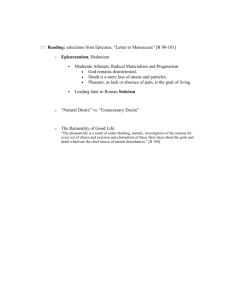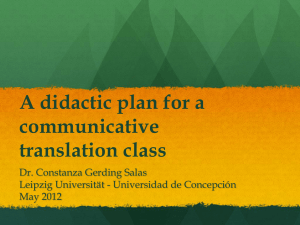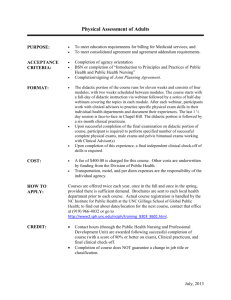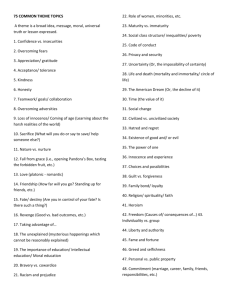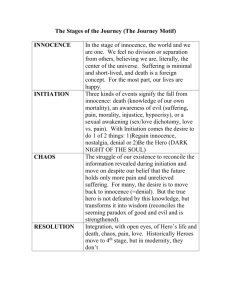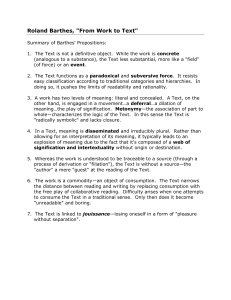What do we know about children?
advertisement
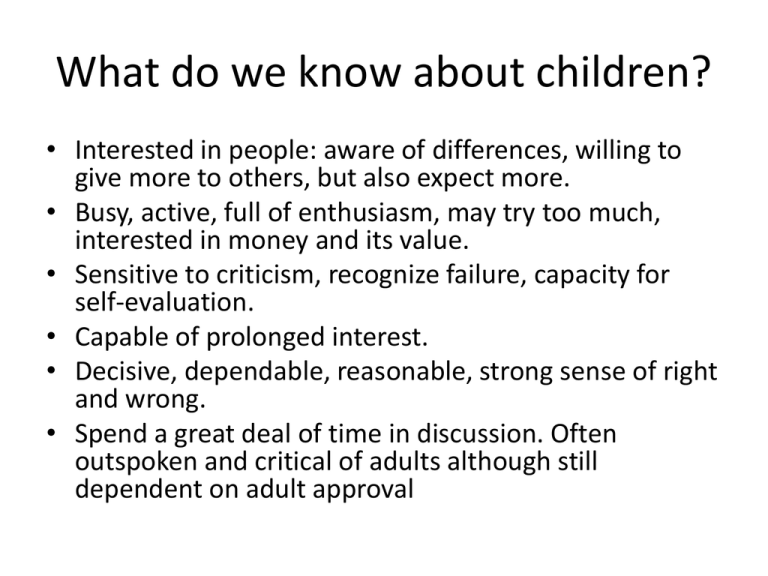
What do we know about children? • Interested in people: aware of differences, willing to give more to others, but also expect more. • Busy, active, full of enthusiasm, may try too much, interested in money and its value. • Sensitive to criticism, recognize failure, capacity for self-evaluation. • Capable of prolonged interest. • Decisive, dependable, reasonable, strong sense of right and wrong. • Spend a great deal of time in discussion. Often outspoken and critical of adults although still dependent on adult approval Roland Barthes http://www.english.unt.edu/~simpkins/Barthes%20Myths.pdf (control + f and search Toys) TOYS Characteristics of Children’s Literature 1. Is simple and straightforward. This does not mean that vocabulary needs to be overly simplistic or that style should be choppy or flat (as too many books for children are). 2. Focuses on action. Subtle psychological events are often implied through narration and comment on actions. 3. Is about childhood. 4. Expresses a child’s point of view. 5. Is optimistic. “Hope is a vital dimension of a children’s book.” (Sarah Smedman) 6. Tends toward fantasy. Fantasy often implies a symbolic defiance of our knowledge of reality, and represents the potential that lies below the surface in each of us. 7. Is a form of pastoral idyll. The pastoral idyll celebrates the joys and innocence of rural life, close to nature and in the company of friends. 8. Views an un-idyllic world from the viewpoint of innocence. More complex and interesting books reflect ambivalence about desire to have the comforts of home and the exciting dangers of adventure, desire to be innocent and experienced, desire to grow up but not grow up, etc. 9. Is didactic. Traditionally, children’s literature has been seen as attempting to educate children. A universal theme is teaching children that despite its boredom, home is a better place to be than the dangerous world outside. 10. Tends to be repetitious. Repeating tasks is a basic method of education. Repetition is a common trait of oral literature. Repetitions with variations of words, phrases, situations, and narrative patterns are common in children’s literature. 11. Tends to balance the idyllic and the didactic. Some books are almost completely didactic (teaching them how to become like mature adults and deal with the adult world) or idyllic (reflecting a desire to retain the innocence of childhood), but most books combine the two approaches, and deal with opposing ideas, such as home vs. away, communal concern vs. self-concern, good vs. evil. Additional Factors • Pay attention to sentence transitions (how does the author take you from idea to the next?) • Organization • Characterization

